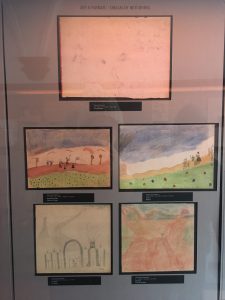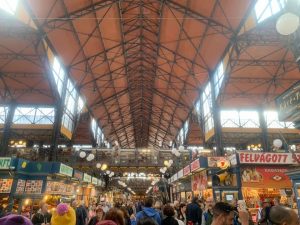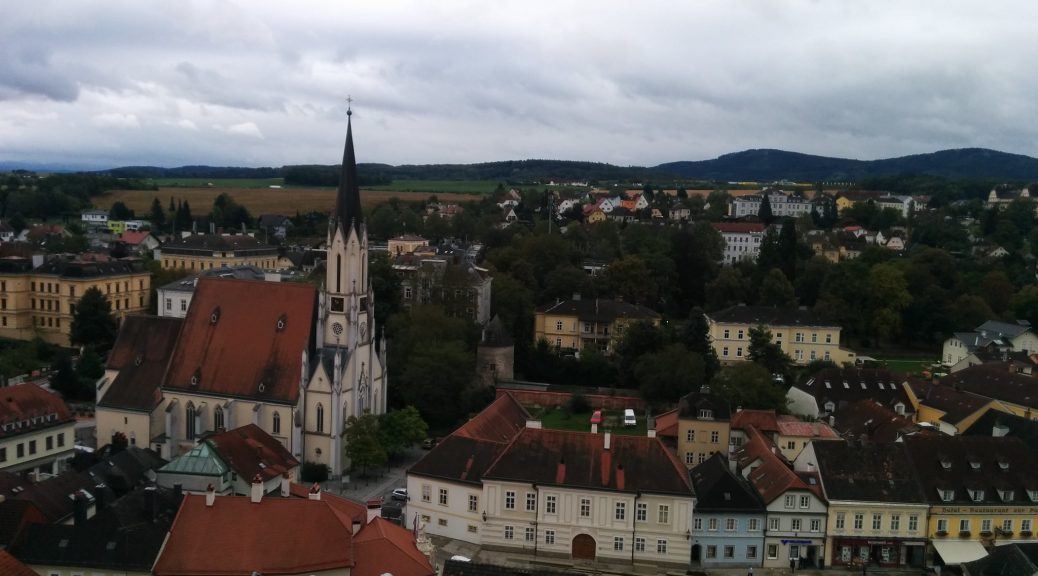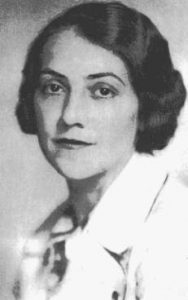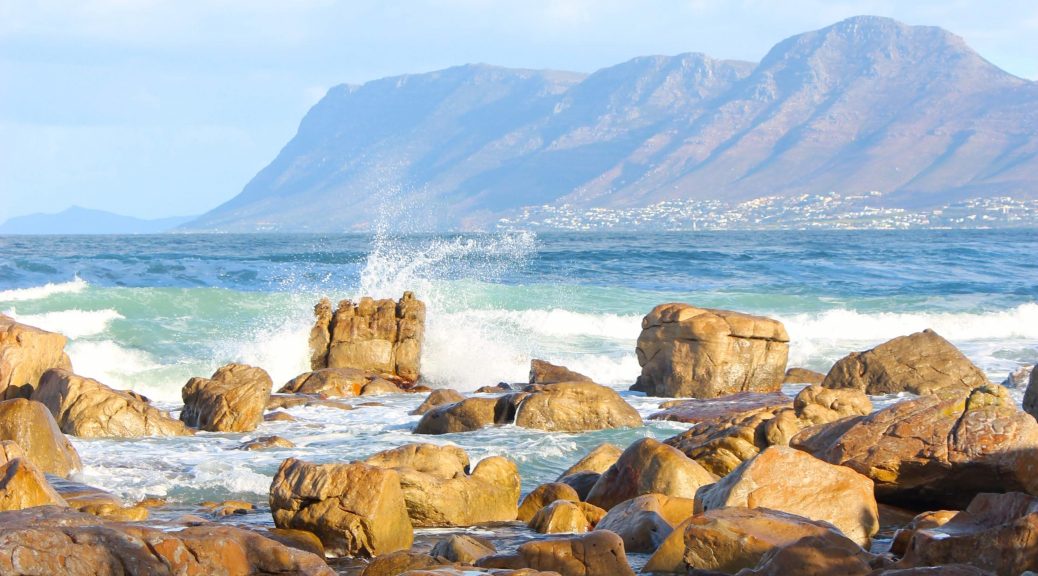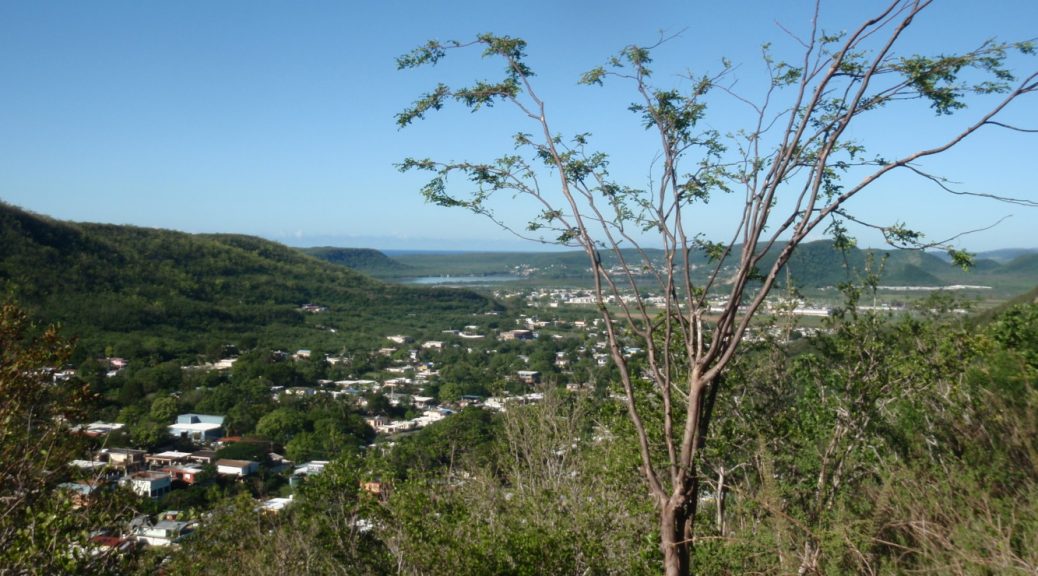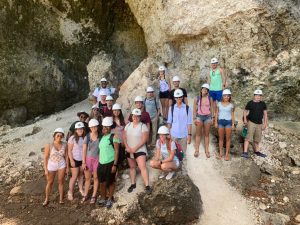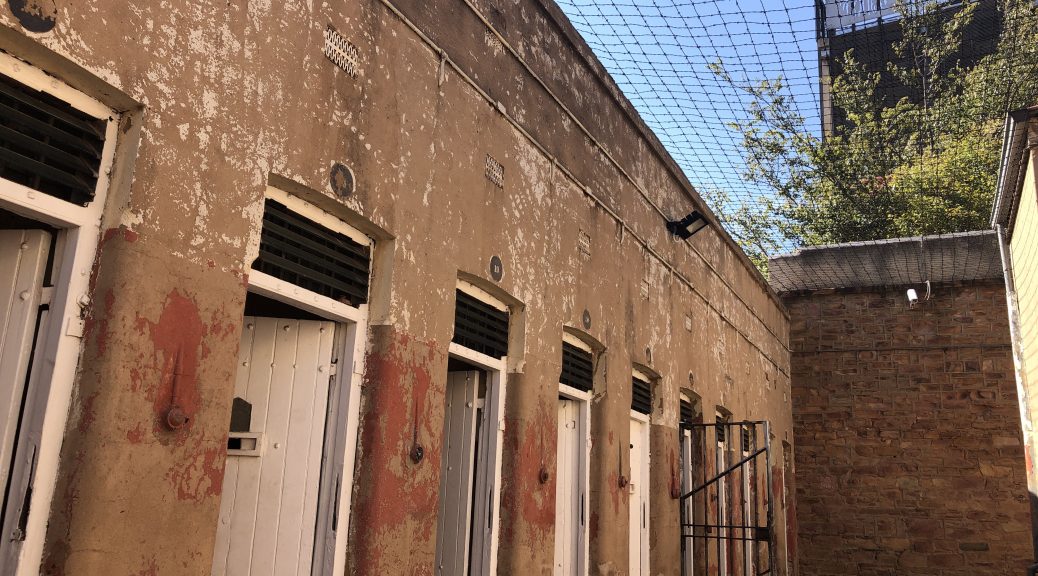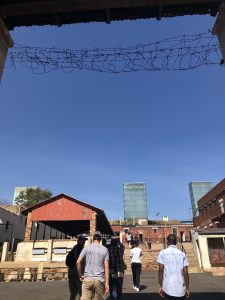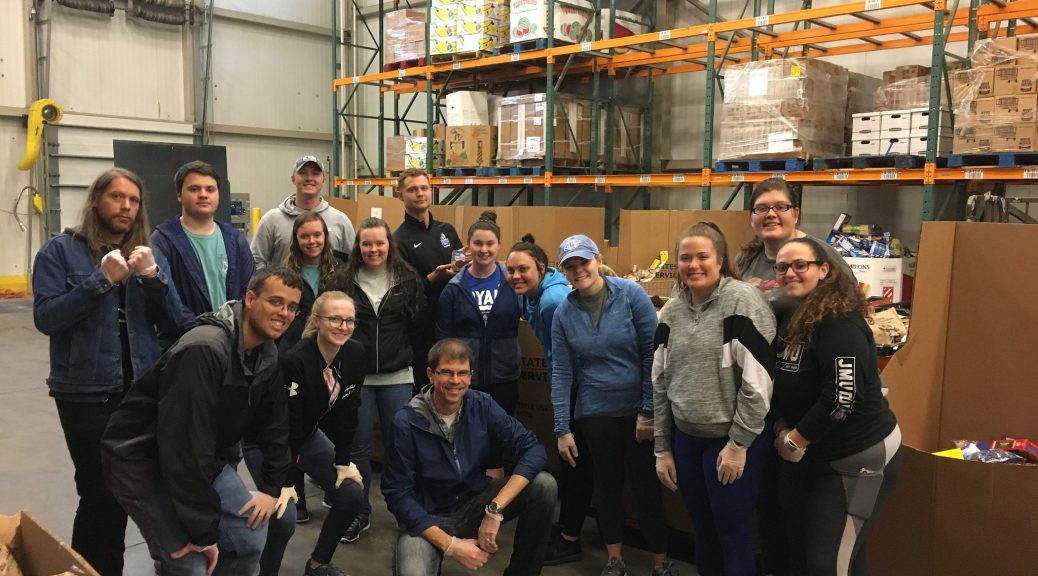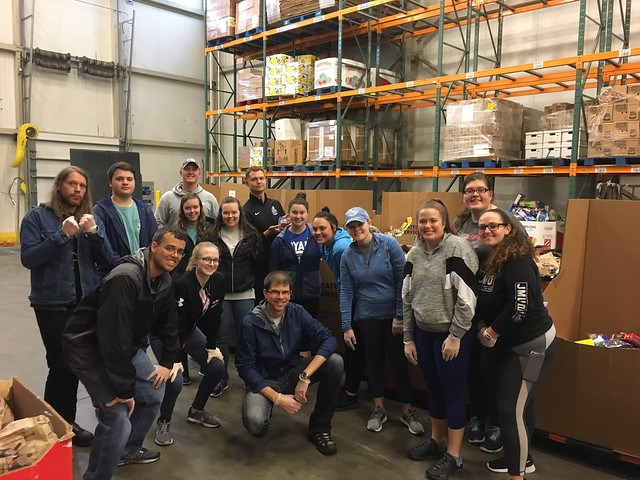After 3 long days in the bus, including a 2.5 hour-long delay due to engine issues, we rolled into Capetown. As an exhausted and grateful bunch, we unpacked the bus, dragging our suitcases up 3 flights of stairs to our new home for the next 10 days. Many of us feel refreshed with the beach view from the back deck – a nice place to escape when we get tired of being in the same room (all 11 young women are sleeping in one room, and the 4 young men are in another). We share a common space and kitchen with other travellers and surfers from around the world.
In Capetown and with day trips to surrounding areas, we are learning about the colonial history of South Africa. Capetown is home to the first settlement of Dutch settlers. We visited places like the Castle of Good Hope and Company Gardens to get a taste of the history of the first settlers. We also visited places like Robben Island to continue learning about the Apartheid era. While driving to and from these places, we continue to observe obvious racial and economic disparities between neighboring areas based on housing, employment, and population density. For release and recreation to take a break from the heavy stories of harm, many of us participated in hiking, surfing, swimming, and napping. Below, several of us have answered a question reflecting on a meaningful experiences we had in the past week. At the end, we also included some brief responses to the 4 questions that have been guiding our group reflections. We as the Communications Team for the week wanted many people to contribute to the conversation. We hope you enjoy and learn from our reflections. Please feel free to add comments and questions to the response box.
-
What was your experience with surfing and the beach we are living next to? (Addison)
The beach that we are currently living next to is absolutely beautiful. We have gotten to experience what life is like when you live by the ocean, and one everyday activity that many locals partake in is surfing. In my own personal experience, surfing was an incredible opportunity. For a lot of us, it was our first time surfing, and while it was a very grueling task, we all were able to stand up at least once! Many of us are definitely planning to surf again while we are here or when we get to our next destination.
-
How have you experienced the change in food? What has been your favorite meal so far? (Olyvia)
The food here is amazing. Almost everything we have tried, we have enjoyed. The food can be spicier than what we are used to, such as the chakalaka, which is a yummy side consisting of vegetables and beans. Another food that is a staple here are pap, a corn based starch that is eaten at almost every meal. Some of my favorite foods here have been the braai (meat cookout), cake with custard, actually anything with custard and amagwena (fat cakes).
-
What were some of your thoughts and reflections as you hiked Cape of Good Hope and Cape Point? (Aaron Z)
Cape Point was an amazing experience. If you want to truly experience the beauty and awe inspiring creation of God, visit Cape Point. Every new ridge you could see over gave you a whole new view. It felt like such a huge space, but at the same time we were at a very small point in South Africa. This really was one of the most beautiful places I have ever been and I wish I was able to show everyone it’s true beauty.
-
Reflect on your experience at Boulder’s Beach. (Lukas)
Walking on to Boulder Beach reminded me of the Oregon coast but with warmer weather and penguins around each boulder. It was a great place to sit, relax, swim or explore and it provided a much needed rest after hiking for a majority of the morning. After hanging out at the beach for an hour or so, we walked on the boardwalk leading to gift stores, ice cream shops and street artist performers.
-
Reflect on your experience at Robben Island. (JD)
We visited the infamous Robben Island. Robben Island was and still is a pivotal part of South Africa’s history. The prison housed regular criminals but mainly housed political activists who spoke against the South African Government. One prisoner by the name of Robert Sobukwe was kept in his own personal cell away from all the other prisoners because his ideology was highly feared. Robben Island was supposed to be a symbol of justice and peace but became the total opposite. My experience at Robben Island was not great. The Island brought up feelings of hate and fear. I constantly thought if I was alive at that time, I would most likely be a prisoner of this island. To me the Island still carries the same energy of hate and violence but at the same time is still building toward peace and reconciliation by offering a truthful story of what happened on the Island.
-
Reflect on the morning Eucharist service at St. George’s Cathedral. (Maddie)
This service stood out to me in many ways. First of all, I was touched that we were welcomed even though the Cathedral was hosting a movie crew and set. We were not as warmly welcomed as we were in some of the churches from the past two weeks in Johannesburg, but nonetheless, we were thrilled to see the church through another lens. Growing up Catholic, I see a lot of similarities in the Eucharistic or Anglican service and the Catholic mass. The one thing that I adored about this service was that the priest was a colored woman. We would never see that in the Catholic church in the United States. The service was easy to follow and timely, as the other services we had attended were spirit-driven (the time of church was determined by the strength of the spirit that day). Overall, I am moved by the progression of the Anglican church and gender roles. I feel that gaining various spiritual views and experiences aids to the lens in which we see this country. These experiences also allow us to come to the understanding that no matter where we are in the world, we can all worship the same God and share the notion that he is alive!
-
Reflect on your experience with hiking Table Mountain. (Rachel)
Hiking Table Mountain has been one of my favorite experiences so far. These past two weeks have required an immense amount of mental energy, so it was a nice change to exercise the physical body. As someone who often processes best during physical activity, it was a nice opportunity to reflect on some of the other learning experiences we have had thus far.
-
How has your view on community struggle changed since hiking Table Mountain? (Alyssa) Since hiking Table Mountain, community struggle has taken on a new image in my eyes. As we hiked, we encouraged, uplifted, and struggled with one another. We went up in three different groups, but all came to the realization that the hike would not have been possible without our community and sense of a mutual goal. This image has been illuminated countless times not only through the struggle of the hike, but has also taken place throughout every community we have learned about and/or experienced. Community is more than just a place; community is a people in unity as one working towards Ubuntu (“I am because we are.”Another way to say it is “A person is a person only through other people”). This concept has brought to light the fact that we are all one and that no matter the circumstances or struggles, we need each other.
-
Compare and contrast your experience at Stellenbosch Motherchurch (Dutch Reformed) and Grace Community Church. (Holly)
Grace Community Church located in Colesberg is a passionate and lively black township church. Stellenbosch on the other hand is a Dutch Reformed in a former whites only town with European undertones. The similarity between these two churches is that they worship the same God and despite the vast differences, the spirit was able to move in both places.
On Sunday, May 19th we attended Grace Community Church. Immediately upon arrival we were greeted with smiles, hugs, and numerous welcomes. The building was one large room constructed with corrugated metal panels. The building was plain and simple but filled with loud, exuberant worship. During the service we were welcomed numerous times, danced, and were even invited to talk while Andrew was asked to give the sermon.
The next Sunday, the 26th, we attended The Dutch Reformed Church. Being a White, Stellenbosch was familiar even with the language barrier of Afrikaans. The building was conventional like what you would see in Europe. We sat in a pew, attentive to what the pastor had to say that day, sang songs with all of the same tunes that are found in the Mennonite Hymnal and yet there was still an eerie presence of discomfort. Apartheid history still looms over Stellenbosch as the theology and leaders of apartheid come out of the university and church there challenging my view of comfort.
A quote that has stuck with me throughout my time states, “We used to have the land and they had the Bibles. Now we have the Bibles and that have the land.” I find that this quote gets at the root of the differences between services.
Summary of responses from the whole group to 4 big questions that have guided our reflections:
What has been a high point?
Hiking Cape Point, Cape of Good Hope, and at lighthouses
Boulder beach
Growing together as a group and being unified through experiences and desire for change and justice
Laughter and conversations around meals
Feeling alive and grateful to be in South Africa
What has been a low point/challenge?
Seeing differences in socioeconomic status in neighboring places
Experiences at Robben Island
Challenged to ask what do I do with this information when I go back to the States
Questioning comfortability
Overworking on food committee (shout out to Maddie, Lukas, and Kayla)
Being sick throughout the week
What have you learned?
Apartheid is still a reality
How we can learn about the history of our hometowns?
Realizing passions and what makes me feel angry
Hospitality is beautiful
Seeing similarities between South Africa and USA
The reality of relocation as breaking apart communities
Taking a risk to talk to people is rewarding
Do not sit comfortably in the status quo
We need to trust in God and encourage others to do the same
How have you seen God?
In the people hosting and feeding us
How we have come together as a group like a family
The Suderman kids – embodying love and joy through laughter, hugs, dancing, ukulele playing, surfing, and so much more
In the resistance groups we have learned about such as Fees Must Fall and Reclaim the City
Being challenged in our comfort
Hearing repeatedly the phrase, there is only one race, “the human race”
In the beauty of nature
-Lydia, Alyssa, and JD
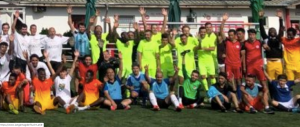 For the past seven weeks I have been living in Vienna as part of the Europe and Morocco Cross-Cultural. While I am here I am volunteering with Caritas, a Non-Government Organization (NGO) with roots in the Catholic Church. Part of Caritas’ mission is refugee aid, and I was fortunate to spend every Monday working alongside staff at Haus Erdberg, a refugee complex housing around 250 refugees.
For the past seven weeks I have been living in Vienna as part of the Europe and Morocco Cross-Cultural. While I am here I am volunteering with Caritas, a Non-Government Organization (NGO) with roots in the Catholic Church. Part of Caritas’ mission is refugee aid, and I was fortunate to spend every Monday working alongside staff at Haus Erdberg, a refugee complex housing around 250 refugees.



